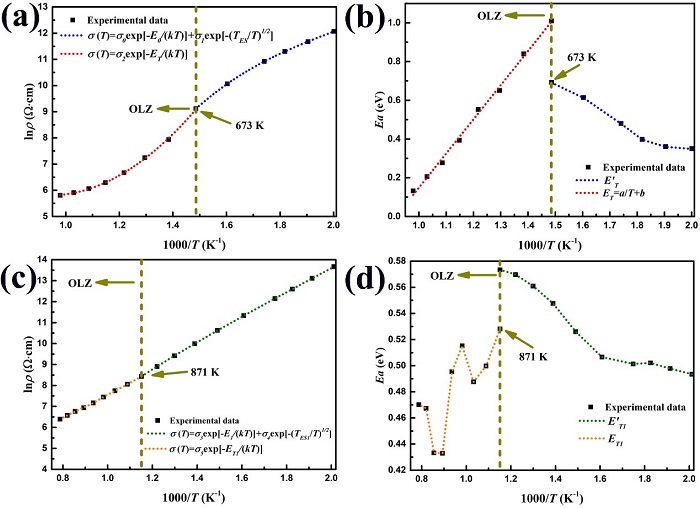Analysis of electrical transport properties of complex oxide high temperature thermistor sensors
Editor: | Mar 25,2022
Negative Temperature Coefficient (NTC) thermistor sensors with fast response, low cost, small size and high sensitivity can be prepared by some oxide semiconductor materials. Through converting the temperature into available output electrical signal, NTC thermistor sensors are widely used in temperature measurement and control in industrial field. Among them, high temperature NTC thermistor sensors are considered as potential alternatives to platinum resistance and thermocouple in the future.
The design and preparation of materials with both structural / thermal stability and electrical transport properties is a significant research topic of high temperature NTC thermistor sensors. In recent years, scheelite structure with excellent thermal stability has become a research hotspot of high temperature NTC thermistor sensor. Its octahedral and tetrahedral structure is compatible with diversity and multivalence of elements, without causing a significant reduction in the stability. Therefore, the oxide with fergusonite-related structure containing redox pair Ce4+/Ce3+ is usually used to prepare the defective solid solution, so as to greatly improve the conductivity and ensure the output of effective signal. Nevertheless, the high entropy structure of this complex oxide increases the uncertainty of microstructure. Simultaneously, its relationship between resistance and temperature deviates from Arrhenius equation in a wide temperature range, suggesting complex electrical transport properties. This brings difficulties to the design of linearized circuit and application accuracy.
Recently, professor Bo Zhang (Xinjiang Technical Institute of Physics and Chemistry, Chinese Academy of Science) et al. found that the above deviation phenomenon is the result of the synergy of variable range hopping transport and low- and high-temperature nearest neighbor hopping transport, and analyzed the electrical transport properties of scheelite Ca-Ce-Nb-W-O-based complex oxide thermistor sensor through the study of microstructure: (1) Superlattice diffraction spots appear in the [112] zone axis. Combined with the lattice fringes with alternating light and dark contrast, it is proved that the system is a modulated structure. (2) Through geometric phase analysis, the obvious anisotropic distribution of edge dislocations in this modulation structure is found, which leads to the diversity of electrical transport properties at low temperature, variable range hopping transport and nearest neighbor hopping transport; At high temperature, rapid oxygen loss induces localization–delocalization transformation, and isotropic defects promote the simplification of electrical transport properties, nearest neighbor hopping transport, which is a non-equilibrium thermal activation mechanism in which the activation energy is dependence of temperature. (3) Based on the density functional theory, the transport properties are dominated by Nb-O polyhedron and W-O polyhedron embedded in the skeleton structure of Ce-O polyhedron and Ca-O polyhedron. It is proved that the localized state of electrons in the z-axis direction and the extended state of xy plane, and the strong electron-electron interaction maintains the localized state of electrons at higher temperature, which supports the conclusion of the diversity of electrical transport properties.
Relevant research results were published in the Nature Index journal Appl. Phys. Lett.. The title is "Modulated structure and hopping transport mechanism involving a defect-induced localization-delocalization transition in a Ca-Ce(La)-Nb-W-O system". The research work is supported by the project of the Youth Innovation Promotion Association of CAS, and the West Light Foundation of the Chinese Academy of Sciences.
https://doi.org/10.1063/5.0086364

Electrical transport properties of Ca-Ce-Nb-W-O
附件下载:
 (86) 991-3838931
(86) 991-3838931 lhskj@ms.xjb.ac.cn
lhskj@ms.xjb.ac.cn (86)991-3838957
(86)991-3838957 40-1 Beijing Road
Urumqi, XinjiangChina
40-1 Beijing Road
Urumqi, XinjiangChina